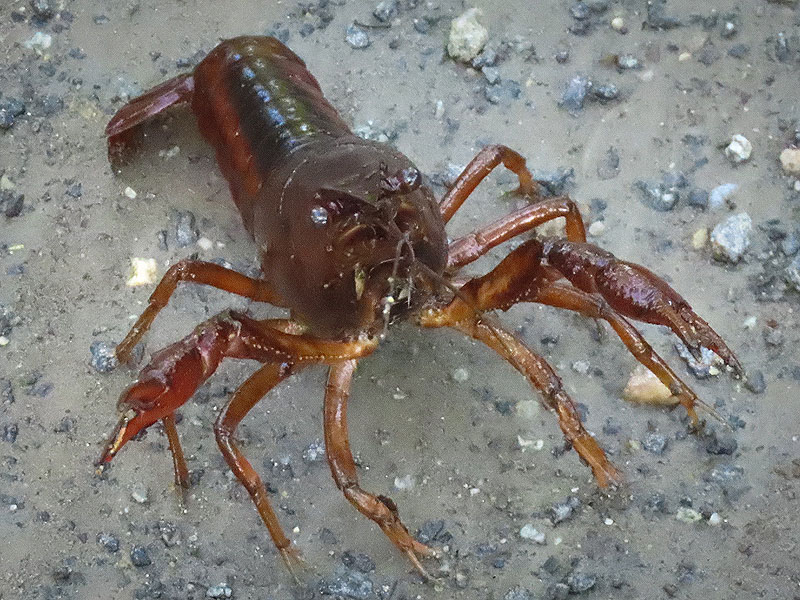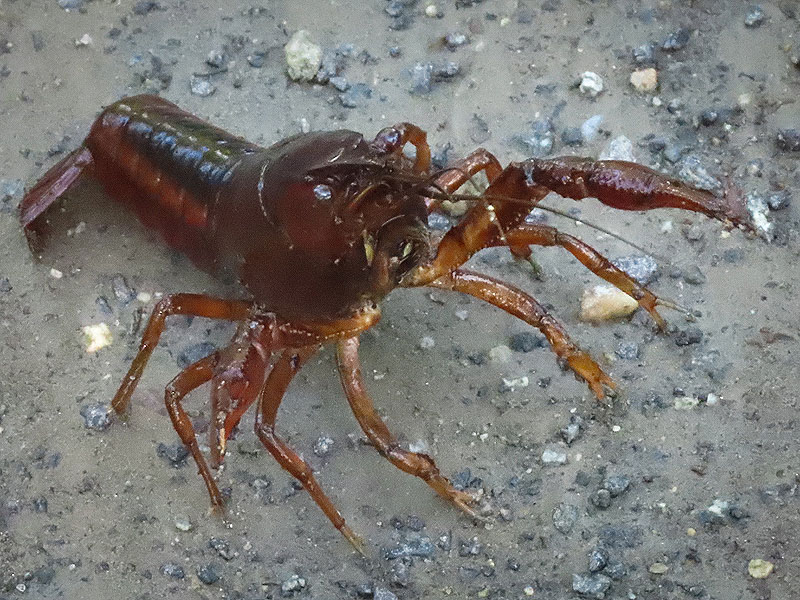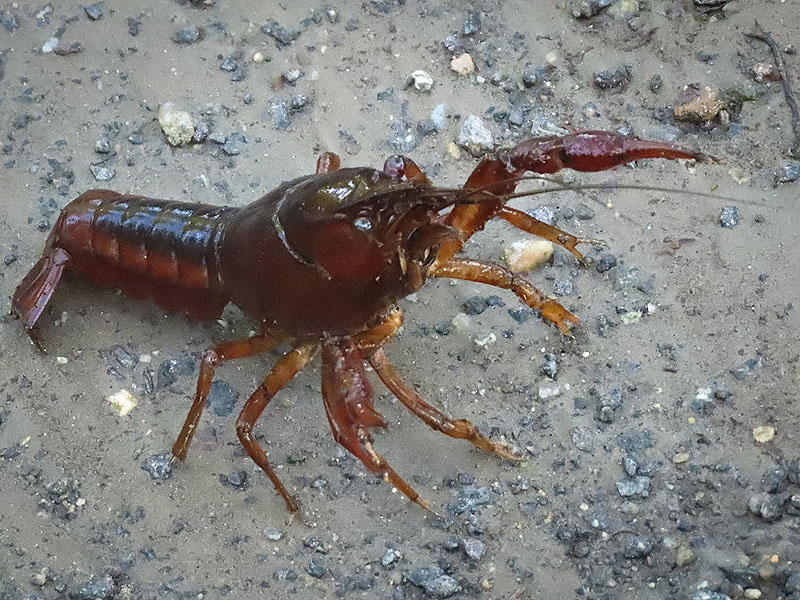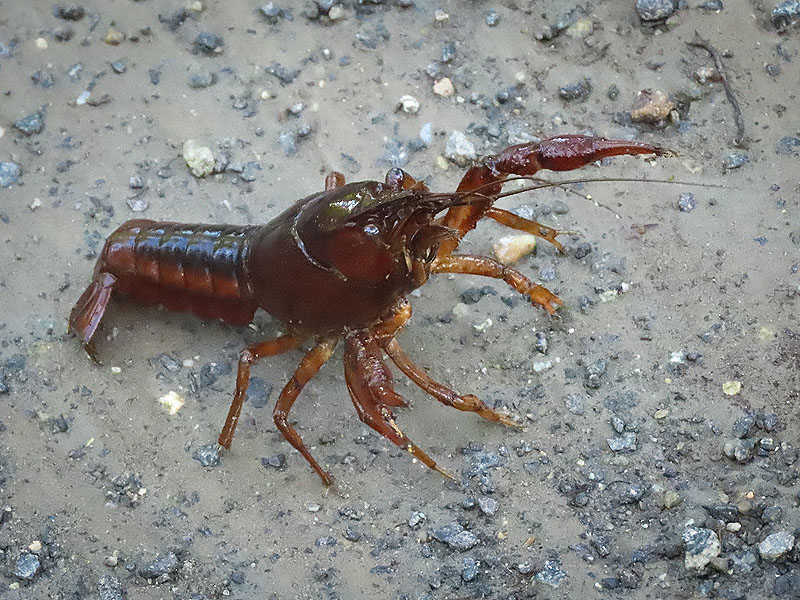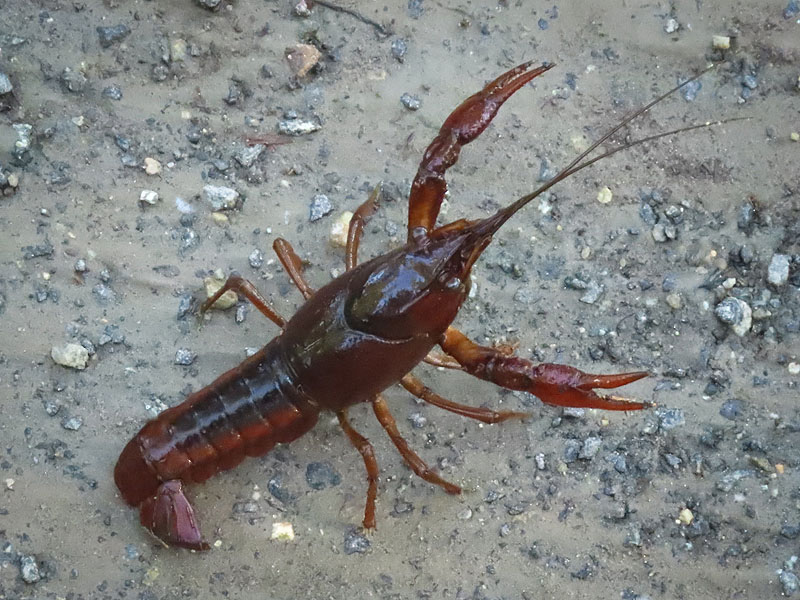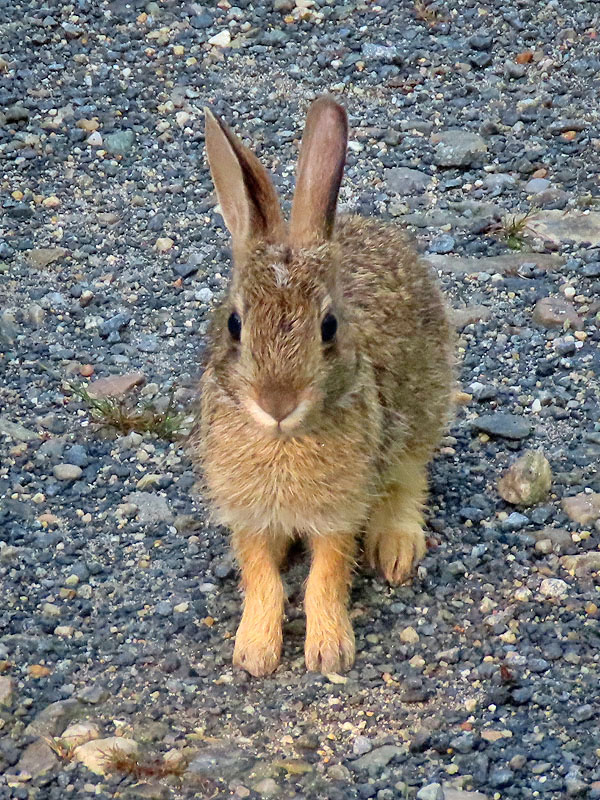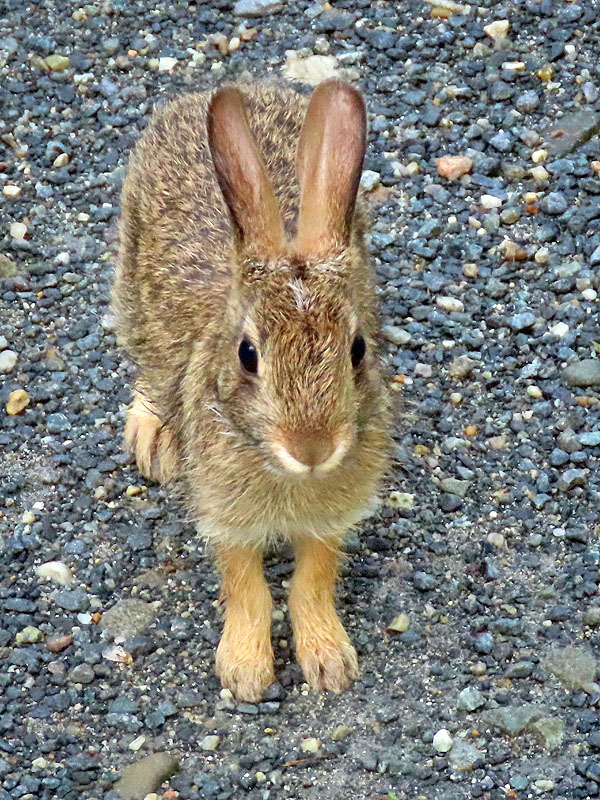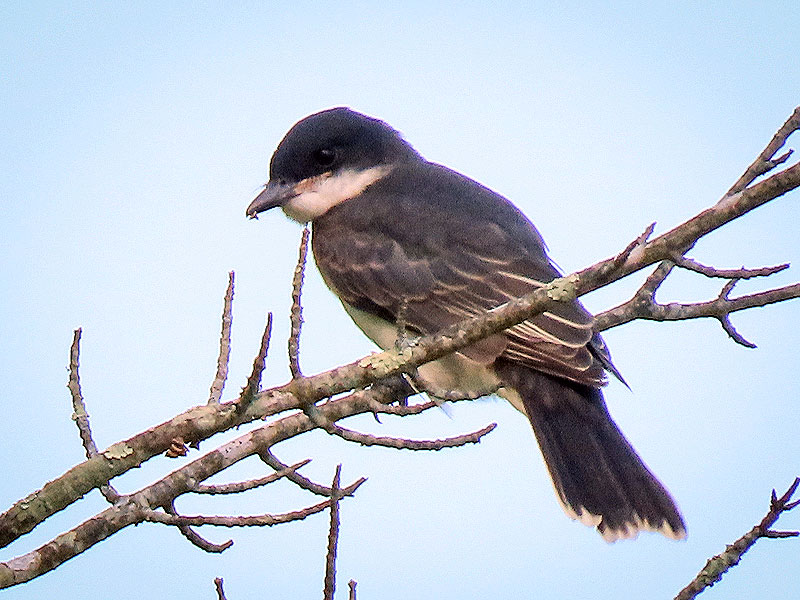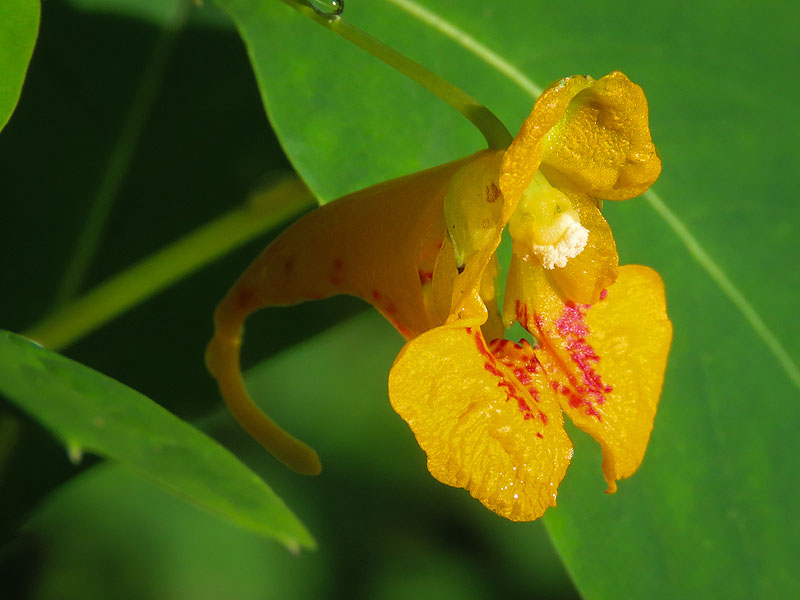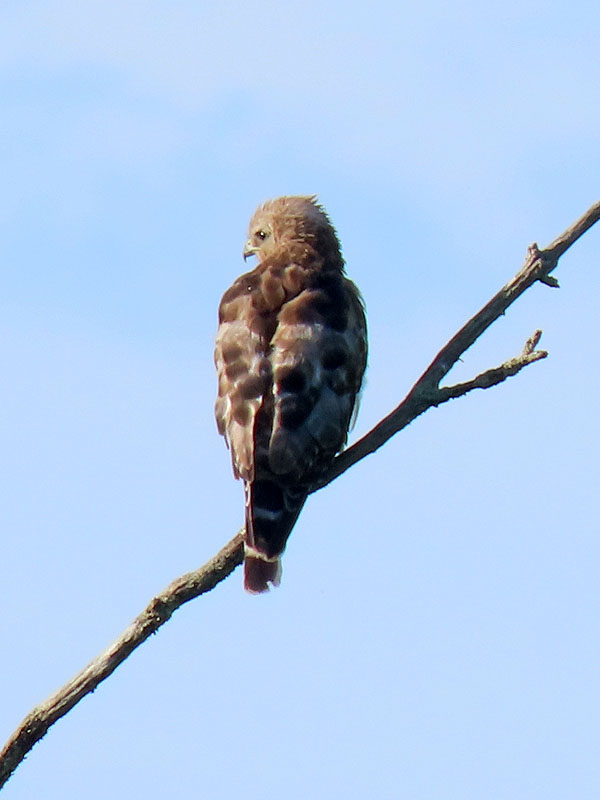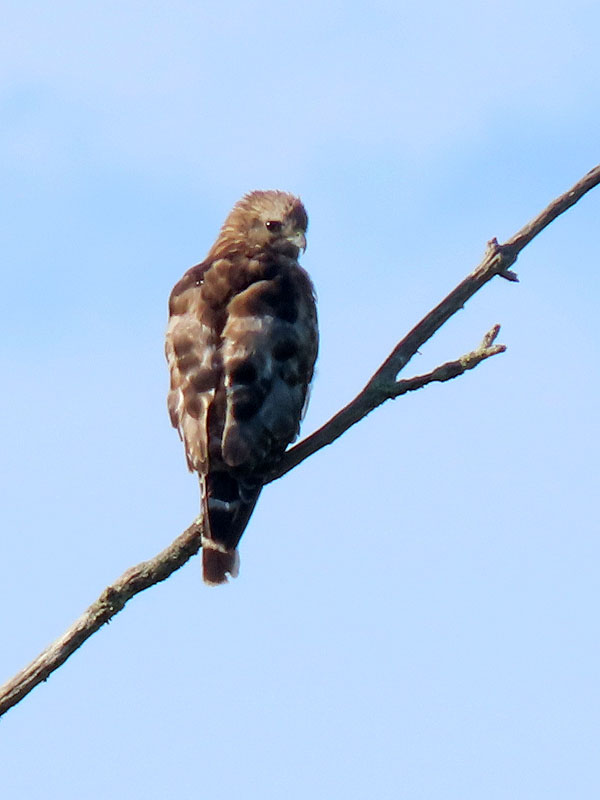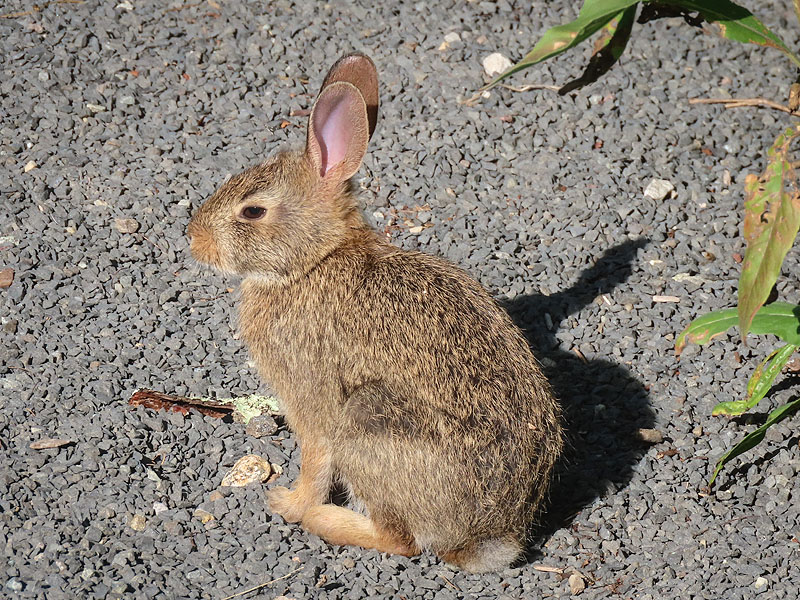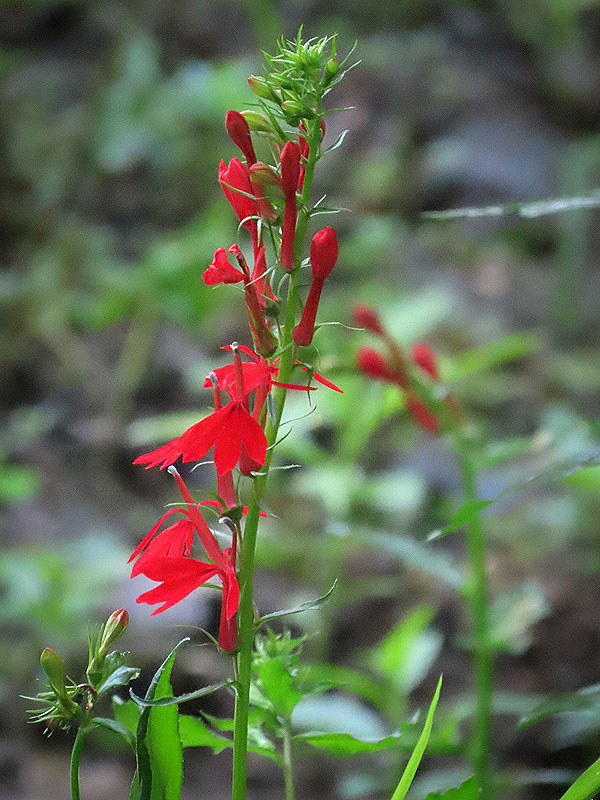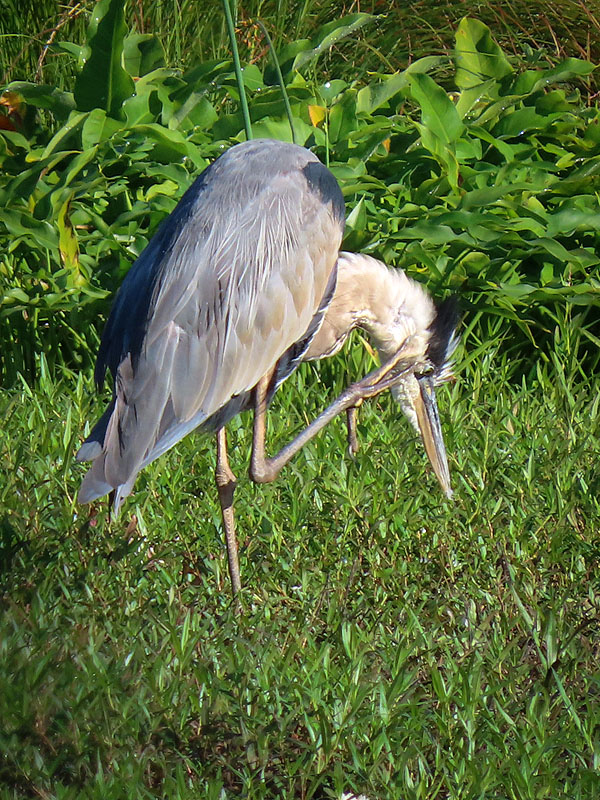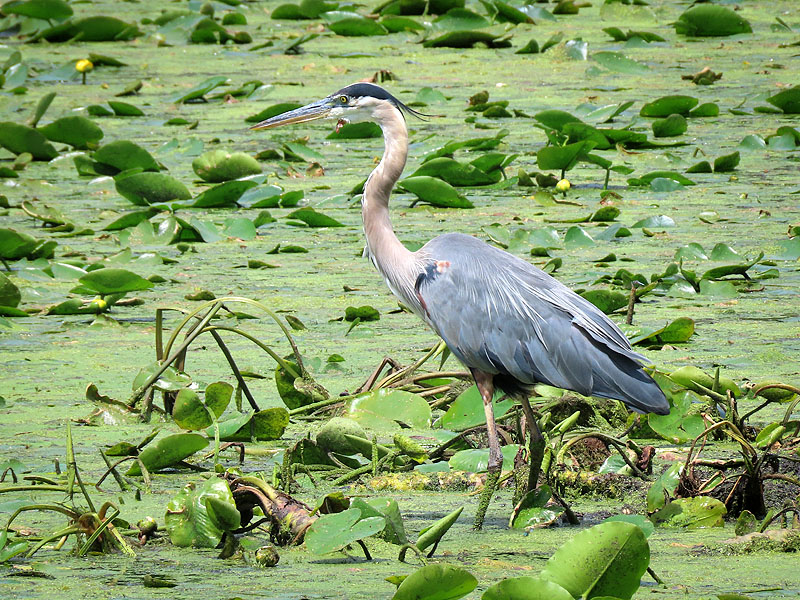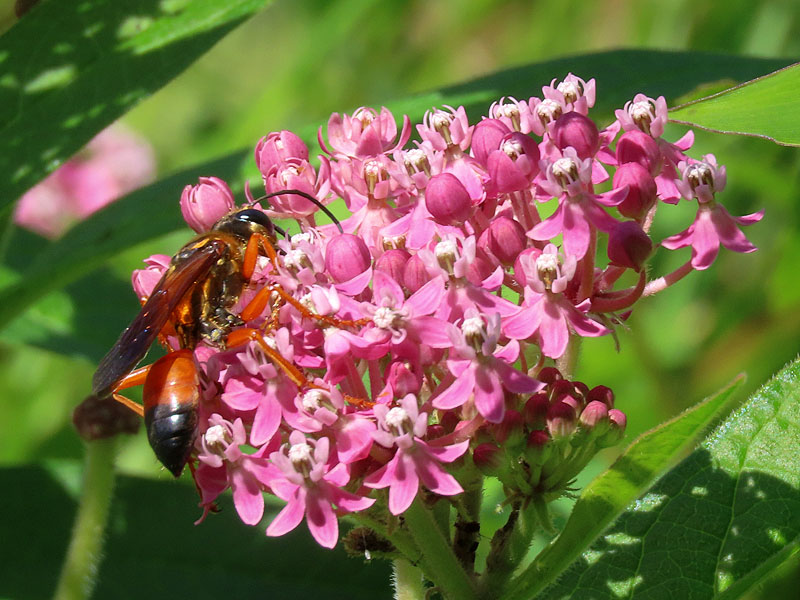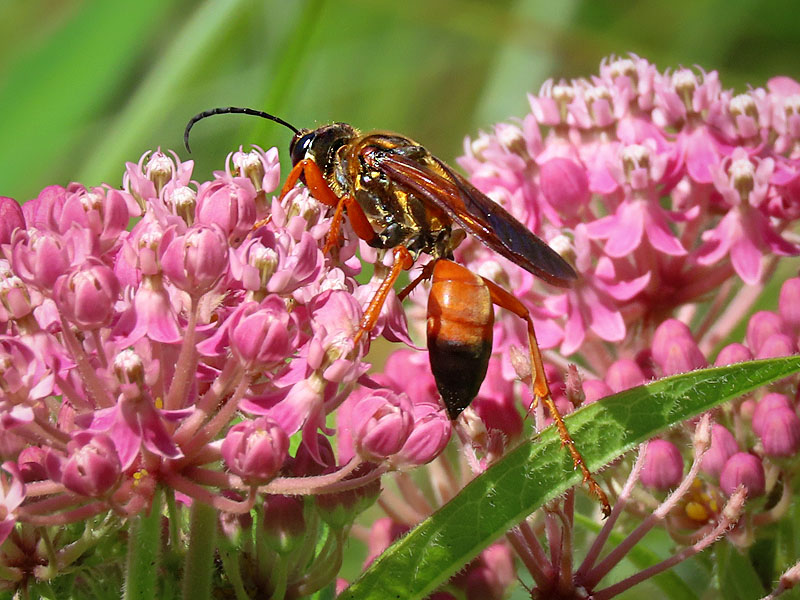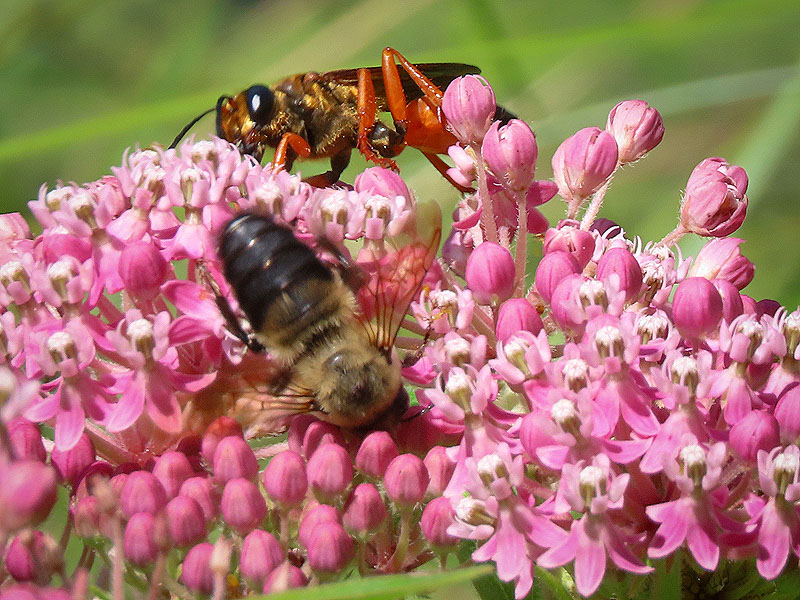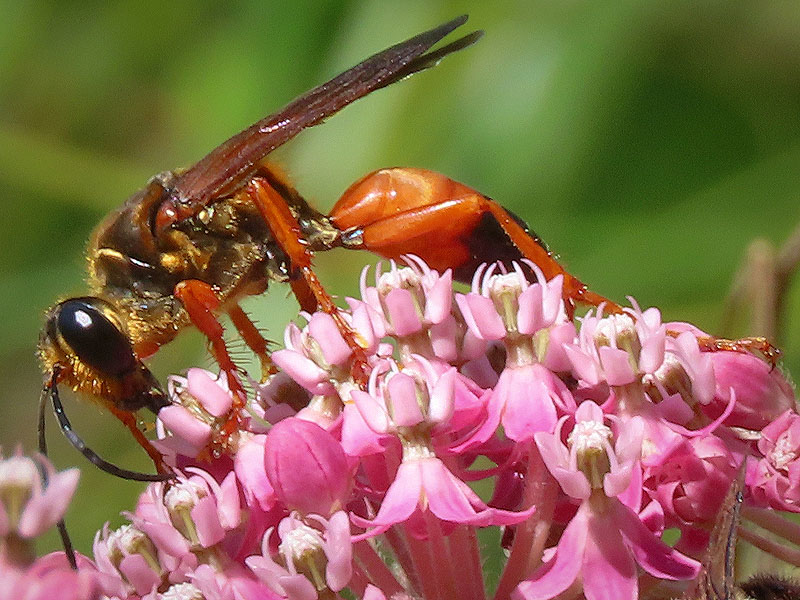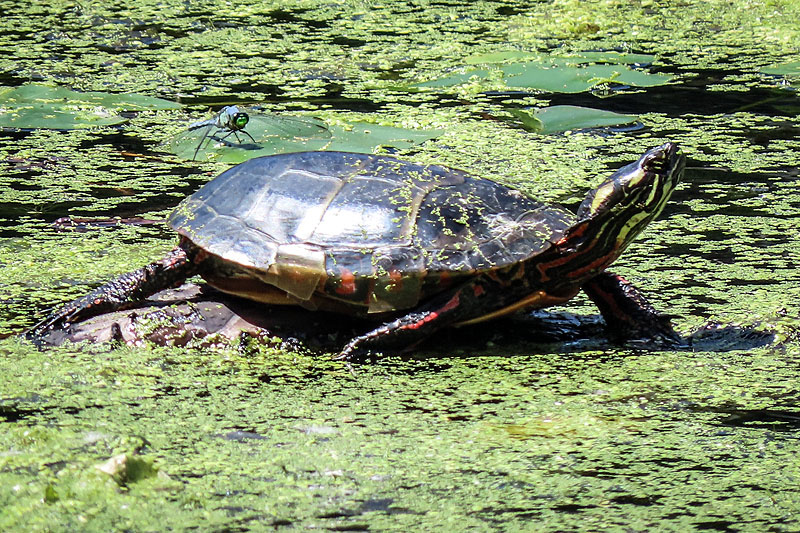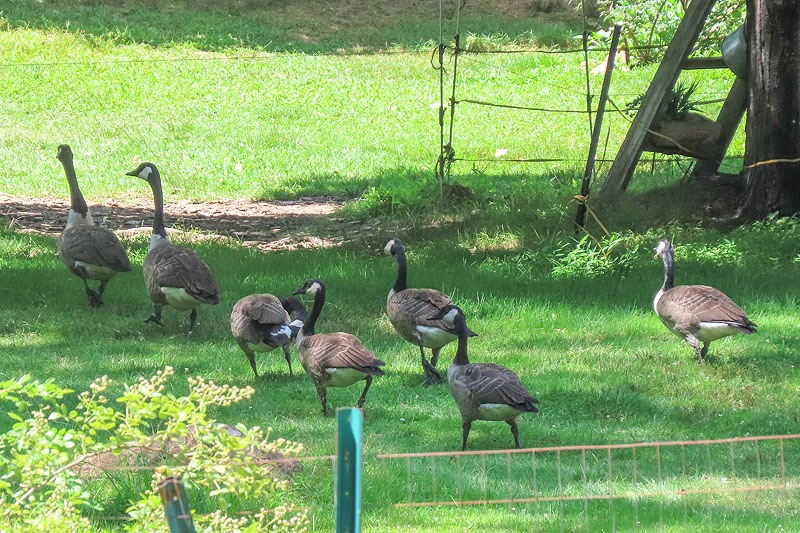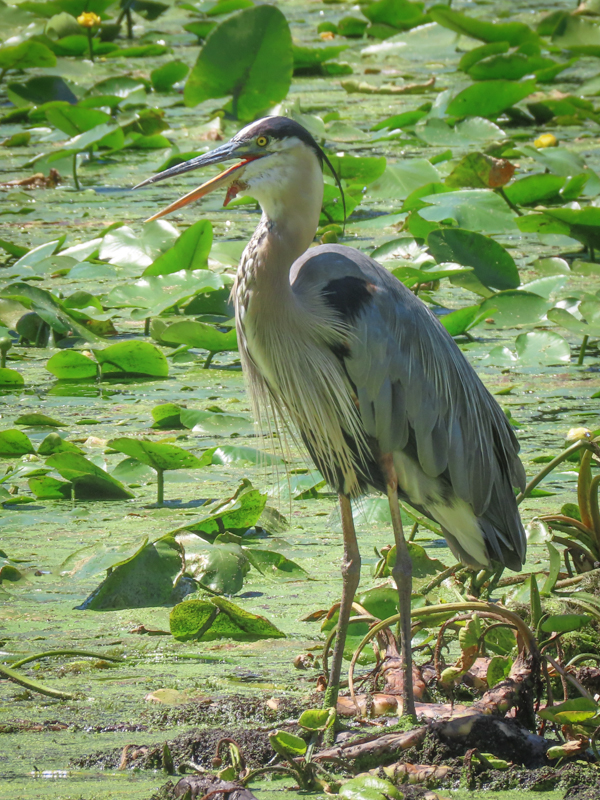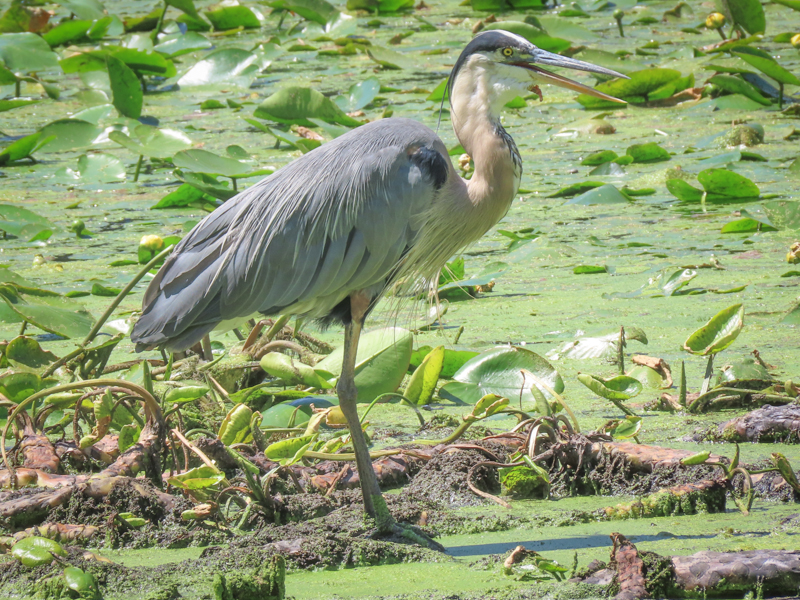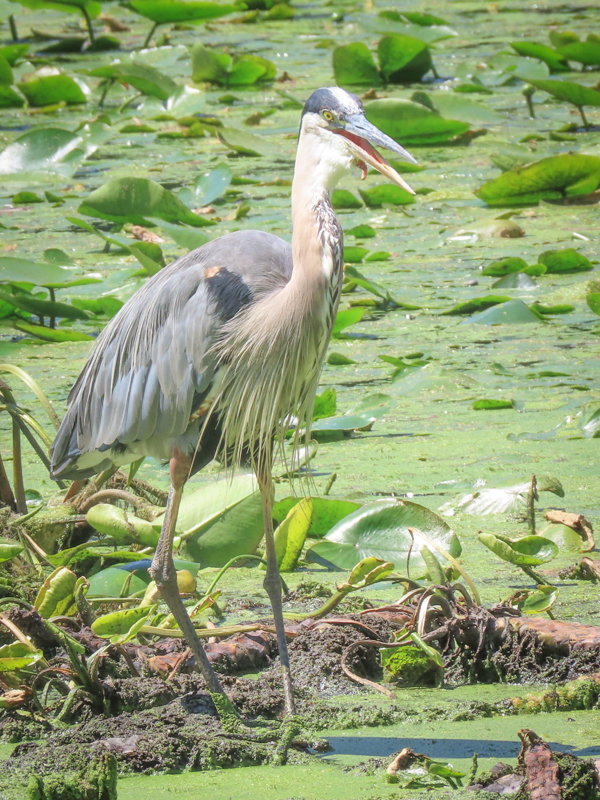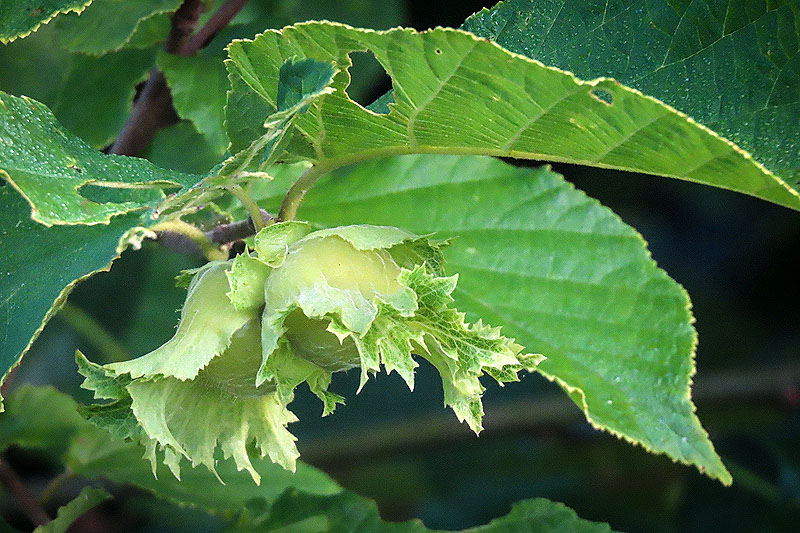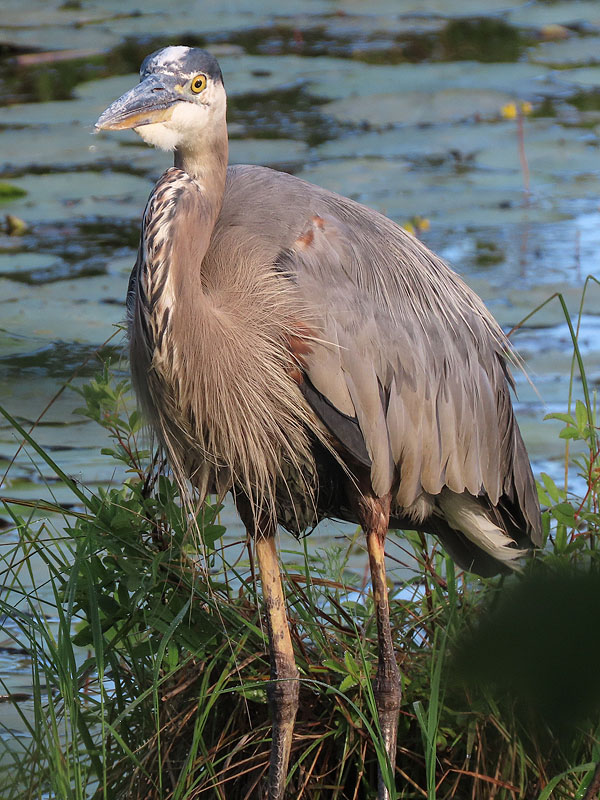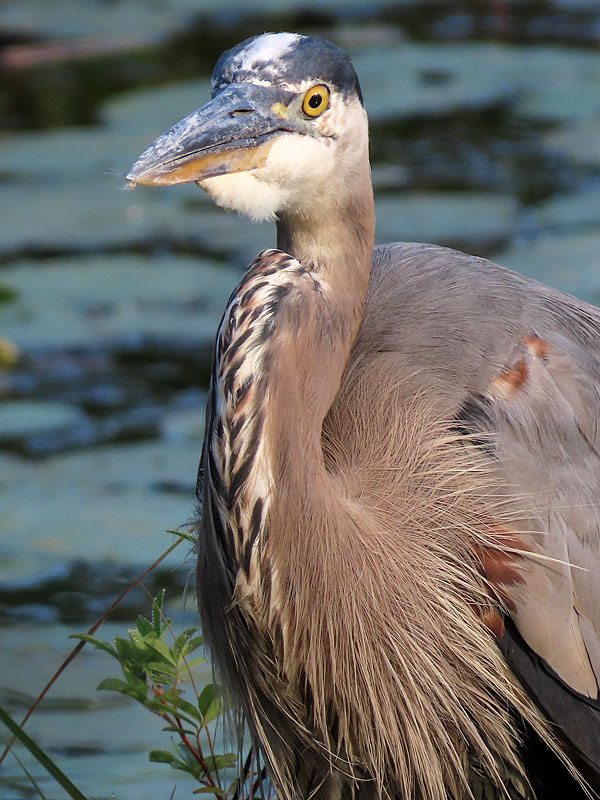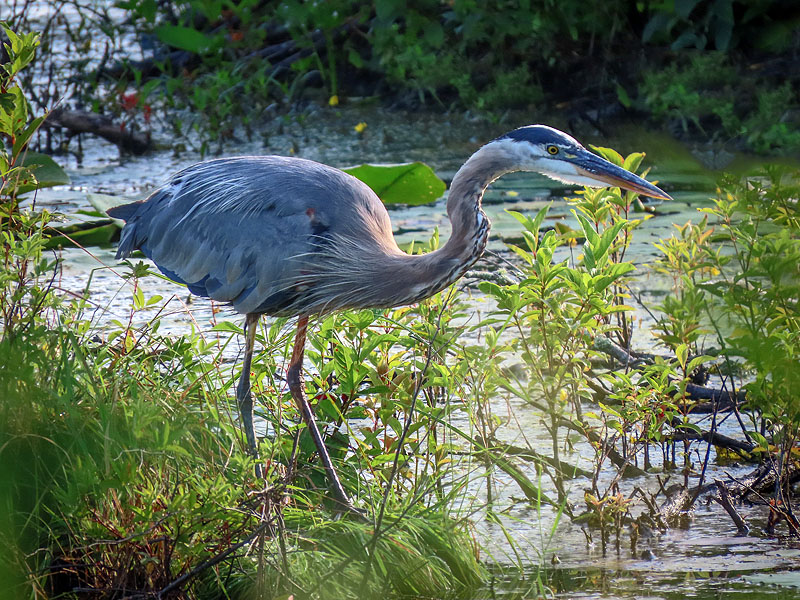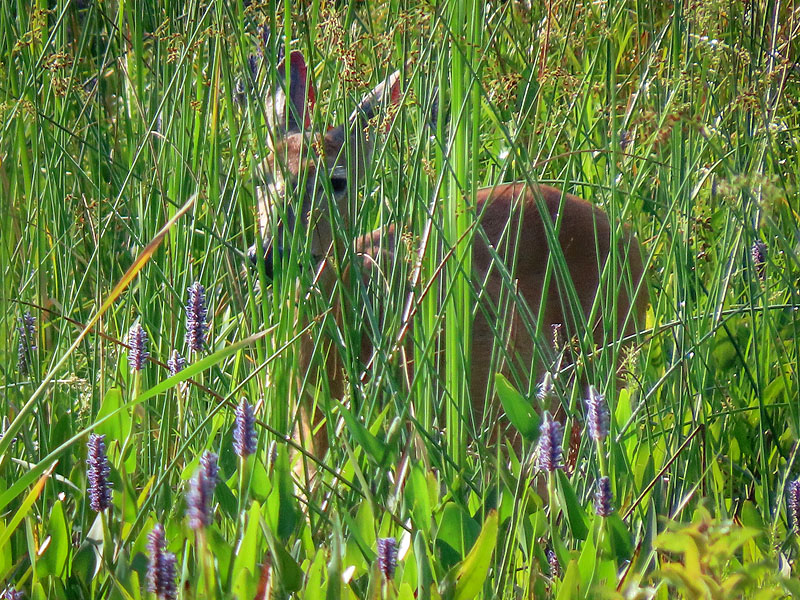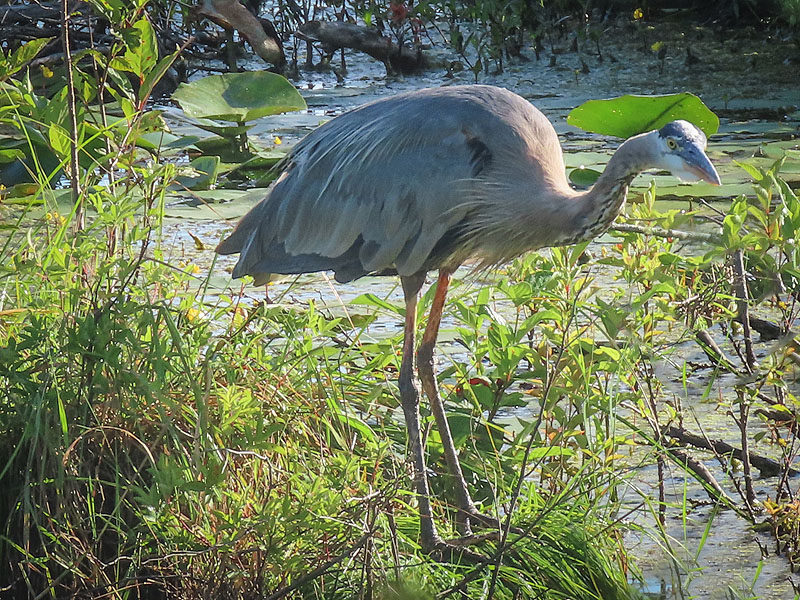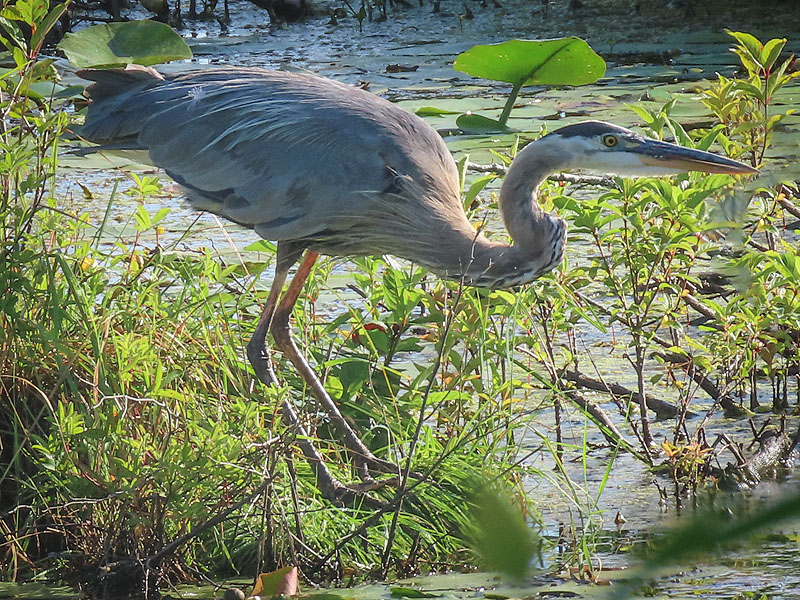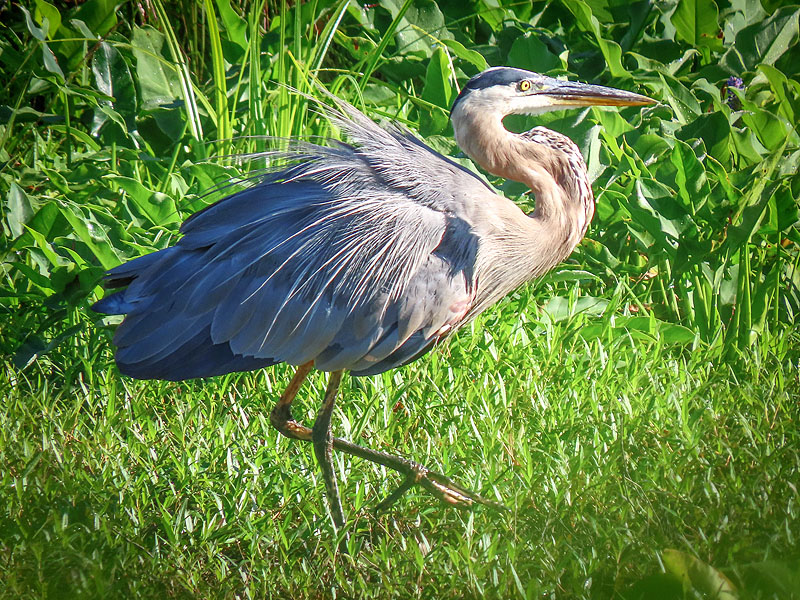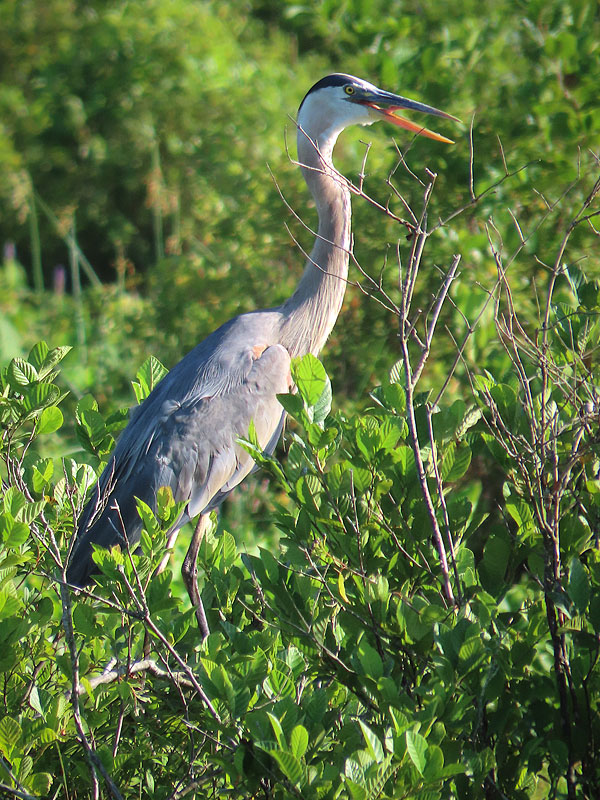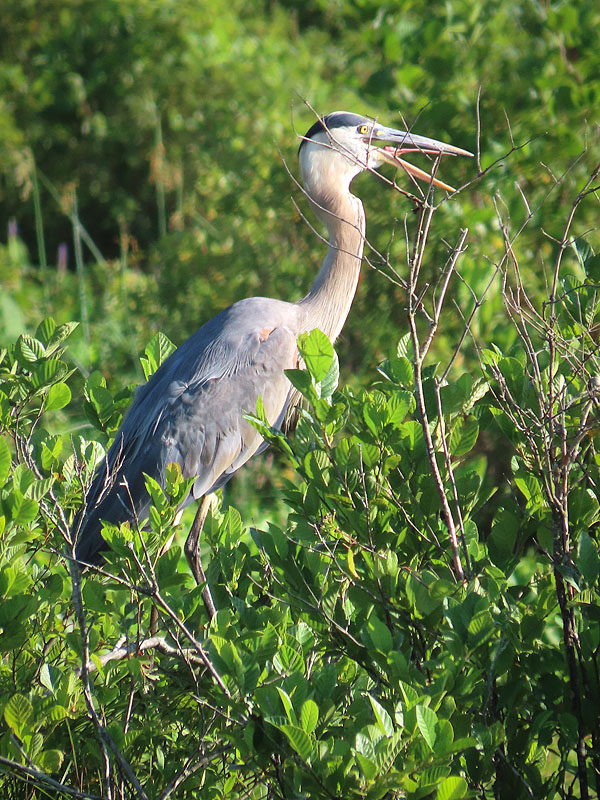Along the Air Line... 2025 - Summer, Part 7 The Air Line Trail in Eastern Connecticut - Stan Malcolm Photos |
HOME: Air Line... 2025 Pages Menu Stan's FlickR Albums |
July 21st. A large Crayfish in defensive posture on the trail. |
I gradually moved around to its side... |
|
|
...and it stayed in defensive posture until I had all the pictures I wanted, and I moved on. |
Today, the young Eastern Cottontail (Sylvilagus floridanus) hopped towards me rather than away. |
Finally, it stepped casually into the trailside foliage. |
One of a family of four Eastern Kingbirds (Tyrannus tyrannus) perched by the pond east of Route 207. |
July 22nd. Jewelweed or Spotted Touch-me-not (Impatiens capensis). |
|
A distant hawk. Best guess a Red-shouldered Hawk (Buteo lineatus). |
|
The young Eastern Cottontail (Sylvilagus floridanus). |
|
A bit of Cardinal-flower (Lobelia cardinalis) surviving at the marsh exit stream. |
Great Blue Heron (Ardea herodius) grooming. |
Afternoon at Cranberry Bog. The resident Grerat Blue Heron (Ardea herodius) with the damaged tongue... |
...that I've seen here for four years or more. |
Great Golden Digger Wasp (Sphex ichneumoneus) on Swamp Milkweed (Asclepias incarnata). |
|
Bumble Bee (Family Bombidae) in the foreground. |
|
Painted Turtle (Chrysemys picta) with a male Common Pondhawk dragonfly (Erythemis simplicicollis) behind it, upper right. |
One of the Canada Goose (Branta canadensis) families down by the farmyard just east of the pond. |
Back to the Great Blue Heron on the pond. |
|
|
"Gular Flutter" is the way birds vibrate their throat to cool themselves, like panting in mammals. |
July 23rd. American Hazelnut (Corylus americana) fruits are developing. |
Great Blue Heron (Ardea herodius) barely visible amid foliage bordering the trail. |
|
On the hunt. |
The White-tailed Deer (Odocoileus virginianus) where she usually feeds each morning. |
A few minutes later, back to the Heron. |
Spotted something but failed to strike as I watched. |
I moved on, but heard someone call out that the bird had caught a fish and was flying towards me. Sure enough, I saw it and could see that the fish was in the process of being swallowed. Note the bulge in its throat. |
Nearby and perched in some shrubs was another heron, this one leaner and very vocal. |
Maybe a young bird not as successful at hunting as the first bird? |
